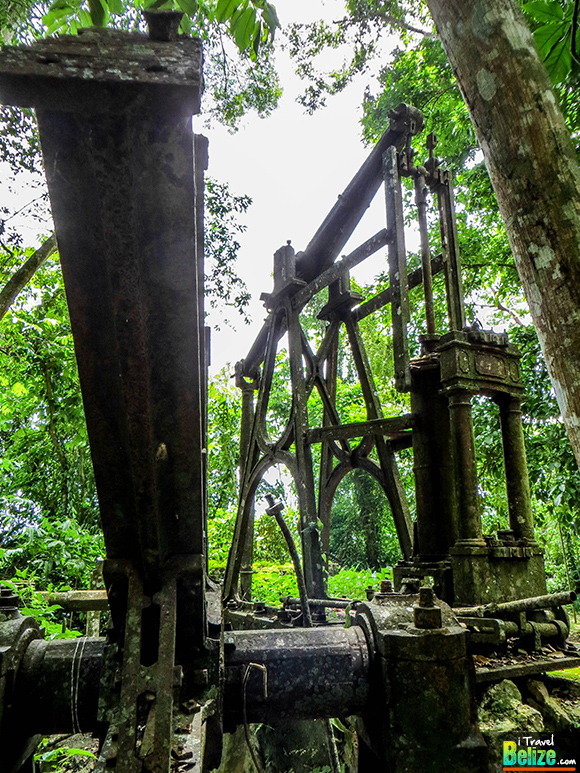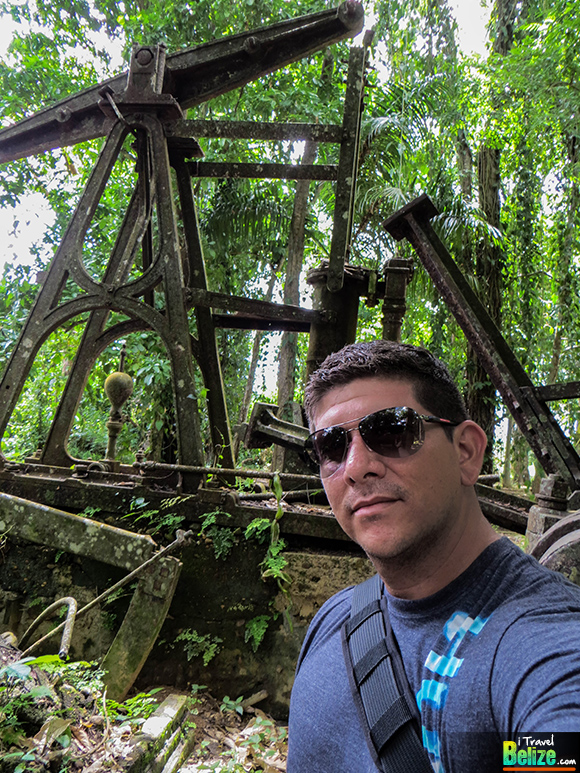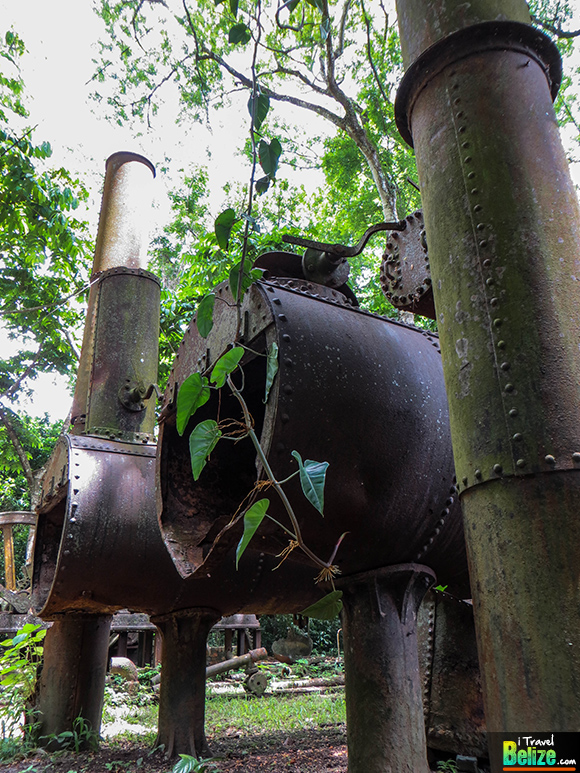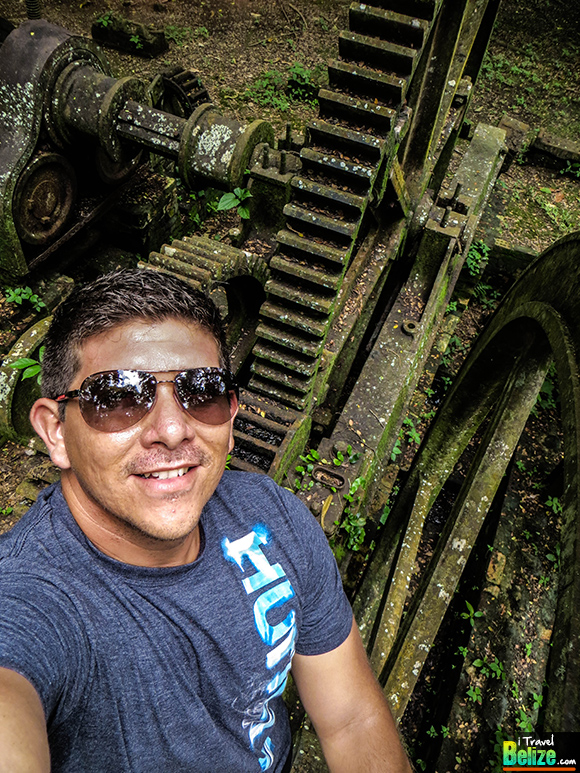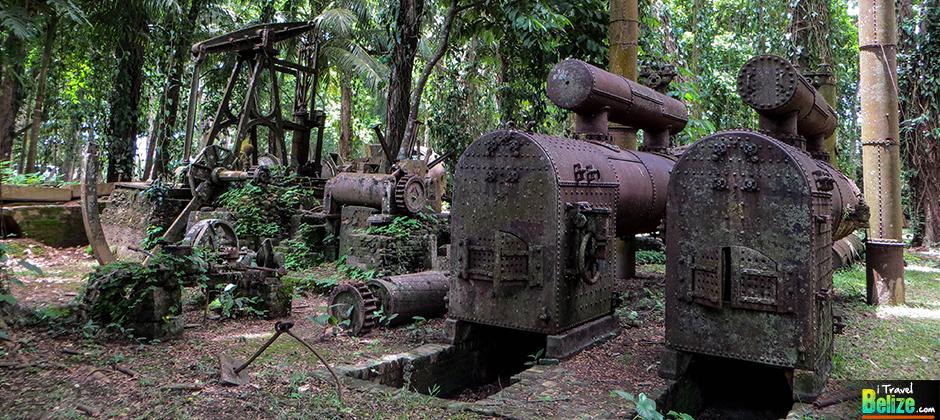It is not one of the most popular, talked-about or photographed attractions in the country of Belize, but a visit to the Serpon Sugar Mill Archaeological Park takes you to a very fun and interesting glimpse back in time when the sugar industry was booming in southern Belize.
Trees stand tall where factory buildings once stood in 1863 and although there are no remnants of the structures, you are left to use your imagination how each factory building connected to each other as you gaze at the rusty abandoned machinery left behind. Heavy metal withstood the hands of time and you find yourself walking around the premises, in and out of the heavy sugar cane grinders, boilers and even remnants of a railway track/machinery that was used to transport cargo.
The elements have carved their way into the metal and mother nature has crept on the machinery leaving this eerie atmosphere under the shade of the giant trees that have canopied the site. There is a small visitor’s center where large posters on the walls give you a brief history of the sugar mill with some light reading and great images to help you get an idea of how the mill looked like.

Serpon Sugar Mill History:
Serpon is named after the estate that operated the mill in the Stann Creek District, on the banks of the Sittee River. It is located about three miles south of Silk Grass in the Southern Highway, or about five miles west of Hopkins.
The Serpon Sugar Mill was opened in 1863, toward the end of the American Civil War (1861-1865). This operation was part of a larger project that involved three estates (the Serpon, Regalia and All Pines) undertaken by a Frenchman Mr. De Brame and an American Mr. Marie who were part of a New York joint stock company. In 1859 the investors had secured 10,000 acres of land in southern Belize with the objective to cut pine timber and to plant sugar cane.
The Serpon and the Regalia Estates were two formidable sugar processing establishments that marked the arrival of the industrial era to Belize. Included in this industrial complex were a lumber mill, foundry, a railroad system with all the attendant crafts and services, stables, cooperage, a blacksmith forge and a docking facility to facilitate the shipment of processed sugar. Serpon and Regalia were booming communities in their heyday. By the turn of the century, however, the introduction of Beet sugar in Europe resulted with a major drop in world prices for sugar. This led to a decline in profitability at Serpon and Regalia and by 1910 both mills were closed.


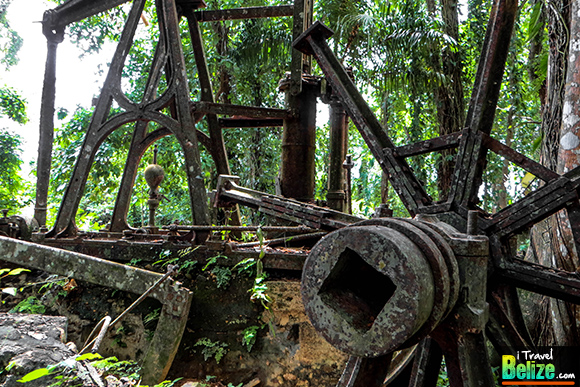
Special Features:
The abandoned machinery scattered across the Serpon Archaeological Park stand as testimony to the once thriving sugar industry in southern Belize.
Did You Know?
Most of the components of the mill at Serpon were manufactured by Stewart and Co. from Glasgow, Scotland. The small locomotive was produced by the Tredegar Foundry in Richmond, Virginia



Directions:
From Belmopan, take the Hummingbird Highway for 45 miles until you reach the Southern Highway Exit. Turn right onto the Southern Highway and travel an additional 10 miles (1/2 hour) until you reach the Sittee River Village access road. Turn left onto the Sittee River Road and continue for approximately 1 mile. Serpon Sugar Mill is located on your right approximately one mile down.
Opening Hours:
365 days in the year from 8:00a.m. to 5:00p.m.
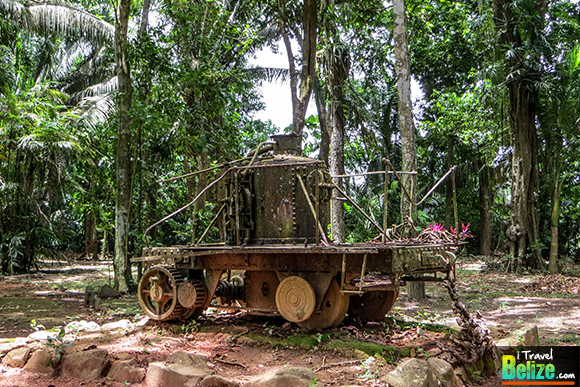
Fees & Reservations:
Belizeans: BZD$5.00
Non-Belizeans: BZD $10.00
Belizeans enter FREE on Sundays and Public and Bank Holidays
School Groups, Government officials, church groups need to contact the IA office prior to their visit for official Pass.
Amenities:
Free Parking
Trails
Picnic Pavilion
Restrooms
Flora & Fauna
Visitors Center & Museum
Filming /Permits
All Commercial Filming requires a Film Permit. For further information contact the Institute of Archaeology
Wedding Ceremonies – Fee & Permit required Contact Institute of Archaeology


